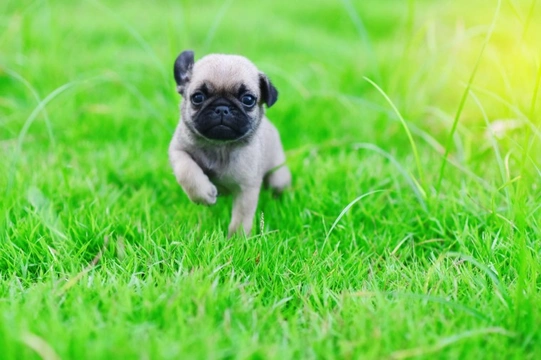
How to motivate a pug during training
The pug is a hugely popular dog breed in the UK – the third most popular overall, in fact – and these small, flat-faced toy dogs are a great choice of pet for many different types of homes and owners.
As a small breed with moderate exercise requirements, pugs can live happily in homes of all sizes, and in a range of environments ranging from urban centres to the countryside without feeling out of place.
However, because the pug is more of a lapdog and companion than a breed that we associate with high energy levels and working roles, this also means that all too many pugs in the UK aren’t trained effectively, if at all – and all dogs, regardless of size and lifestyle, need to be trained to follow at least a few basic commands that are essential to keep them safe and under control.
If you’re considering buying a pug or have already chosen one and are wondering how to go about training them and what they are capable of, this article is for you. Read on, and we’ll outline the core pug traits that you need to know about before you begin training your dog, and then share some tips on how to motivate your pug during training.
The core traits of the pug
The pug is not one of the highest energy dog breeds of them all, but they can be quite comical and entertaining, often expending a lot of energy in short bursts before flumping out for a rest. They are soulful and thoughtful dogs that are very kind natured and that do not thrive if ignored or spoken to sharply, and they try hard to please, and benefit from thoughtful handling and plenty of encouragement.
Whilst this is not a stupid breed, they’re not one of the most highly intelligent dog breeds either and so you will need to consider carefully which commands are most important for your dog to learn, as there is an upper limit to what the pug, like any dog breed, is capable of learning.
Finally, as a toy breed, pugs are all too often babied and not treated like dogs at all, which sometimes extends to a total lack of training – and it is vitally important to provide an appropriate environment and lifestyle for your dog, which includes appropriate management, training and socialisation.
How to motivate a pug during training
Get your pug in the right frame of mind
First of all, ensure that your pug is calm enough to pay attention to your training session but not so worn out that they are flagging, by taking them for a brisk walk of 10-15 minutes first.
This will allow your dog to take the edge off their high spirits, but still leave them plenty of oomph left to learn.
Be kind and encouraging
Pugs need positive reinforcement and encouragement in order to learn effectively, and they are very adoring of their owners and bask in kind words and praise. Coach and encourage your dog rather than ordering them around or dictating to them, and be quick to tell them they have done well when this is merited, and don’t get frustrated when they don’t pick things up immediately.
Be patient
Pugs aren’t a particularly hard breed to train to follow basic commands, but you might well need to use several repetitions across several different training sessions to enable your pug to pick up each new command you want them to learn.
Accept this in advance and be prepared to be patient, as pugs try hard but they do learn at their own pace. Also, refresh previously learned commands within each training session too, to ensure that your pug retains them.
Use treats – but not too many
Food is a great motivator for dogs, and pugs love to eat – and using treats can help to ensure that your dog learns and retains commands more effectively. However, pugs are also prone to running to fat, so ration training treats and intersperse them with other rewards like toys and praise.
Be clear and consistent
If your commands are not clear and your approach consistent, your pug will not learn effectively. Remember that it can take a while for a dog to learn a new command and that you need to keep giving them the same message, otherwise your dog will get confused and you will sabotage your own training.
Have a plan for the commands you wish to teach ahead of time
Decide which commands are the priority for your pug to learn and ensure that they learn these first. If your pug proves to have the capacity to learn more skills, you can of course get to work on them later – but choose five core commands to get across first, before you start thinking about other skills or teaching your dog tricks.
Manage your expectations
Pugs can’t usually learn a vast vocabulary of commands, but all pugs can manage 5-10, and many several more. This means that a well-trained pug should be obedient, responsive and switched on enough to follow your direction, but that they may not be capable of learning long or complicated commands like some other breeds can.
That said, pugs are not stupid, and they outstrip just as many breeds in the intelligence stakes as there are ahead of them in it too!



